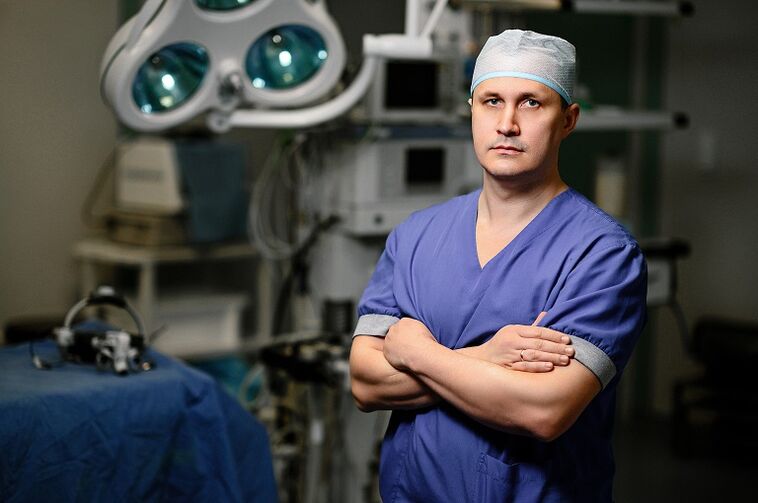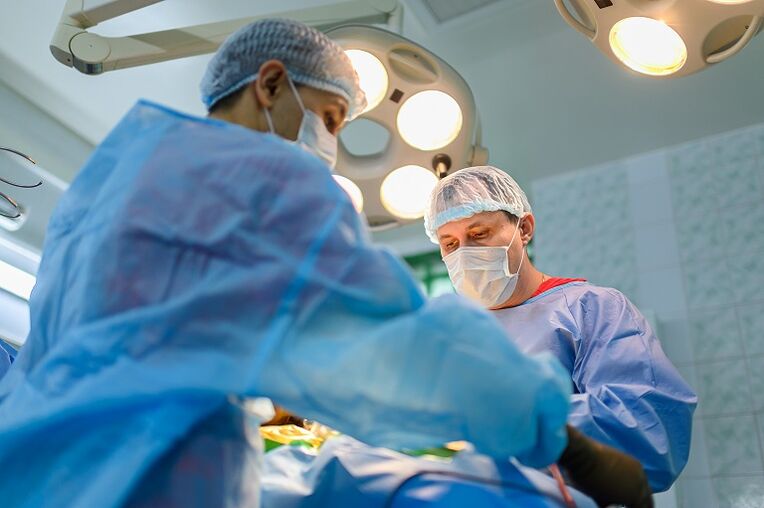Experts talk about modern methods in treating patients with cervical spondylosis

Cervical spine pain is a fairly common phenomenon that people unfamiliar with medicine often call "cartilage". It is believed that almost "everyone" gets this disease at a certain age, which means you just need to be "patient".
Alexey Peleganchuk, head of the department of neuro-orthopedics, orthopedic traumatologist, neurosurgeon, PhD, spoke about the technologies available to doctors to help such patients.
What disease do patients often call "cervical chondritis"? What is the correct diagnosis?
- Actually "cervical spondylosis" is slang, the disease is more accurately called "cervical spondylosis". This term is used by doctors in the post-Soviet space and corresponds to the current ICD (International Classification of Diseases) with which we work. However, in most countries such a disease does not exist, they call it "degenerative-dystrophic disease". When making the diagnosis, we indicate "cervical spondylosis" and then we decipher which segment of spinal motion is affected.
Usually, people associate this disease with pain in the cervical spine. Is this the main and/or only symptom?
– The most common reason for these patients to see a neurologist is pain. It can be said that the main clinical manifestation of degenerative disease - cervical spondylosis in this case is pain. In addition, even more dangerous manifestations of common degenerative diseases are weakness in the upper limbs (possibly in the lower limbs) and decreased sensitivity - numbness.
Can headaches and tinnitus occur with cervical spondylosis?
– These are non-specific symptoms of cervical spondylosis, but they still happen sometimes. If such a patient comes, then first of all this is a reason to prescribe a brain MRI to exclude any organic changes. If the patient has done this, he is not amenable to conservative treatment and has a stroma in the form of a disc protrusion, which is extremely rare but can reflexively cause these phenomena, then there isan option to help this patient, but the effectiveness will be significantly less than the classical method of treating pain in the cervical spine.

What is the cause of pain and what options are available to treat such patients?
– Three groups of patients can be distinguished. The first group is reflex pain syndrome, the second group is nerve root syndrome, myelopathy - damage to the spinal cord itself, as in severe stenosis, and the third group is extremely rare patientsencountered, but most complicated, those who suffer the most are patients with neurological diseases.
Reflex pain syndrome can spread locally in the neck area and can radiate to the shoulder blades and upper limbs. But the peculiarity of this pain syndrome is that the nerve tissue - specifically the spinal cord and its roots - are not compressed (not compressed).
Accordingly, in this case, if we are considering the option of surgical treatment, then these are outpatient methods - for example, blockade. More invasive procedures include radiofrequency denervation and cold plasma discectomy - a hardware puncture procedure performed without an incision.
The goal is to eliminate the pain syndrome or significantly reduce its intensity and reduce the patient's need for pain medication.
The second group of patients are hernia patients. Hernias in the cervical spine can cause root compression and if conservative treatment methods are ineffective, surgery must be resorted to. The purpose of the operation is to perform decompression, i. e. remove the hernia, respectively, the spinal roots will be freed and the pain syndrome will regress.
With large hernias, there are also conduction disorders: in addition to compression of the spinal roots, the spinal cord itself can also be compressed (squeezed). The patient then experiences more severe clinical manifestations in the form of quadriplegia, which is weakness in both the upper and lower limbs. In this case, it is necessary to perform decompression - to create reserve space for the spinal cord so that it can recover a second time. It is important to understand that surgery does not restore the spinal cord and nerves but creates conditions, that is, creates reserve space.
In addition to hernia, there is also circular stenosis. They develop due to complex problems arising in the cervical spine, leading to circular narrowing of the spinal canal.
These are critically ill patients, sometimes ill for many years, and unfortunately, most are admitted to hospital with severe neurological deterioration and often require two-stage surgery.
And another group of patients are people with neuropathic pain syndrome. In this case, the patient without stenosis will have neuropathy (the nerve itself is painful). Then help will be provided using neuromodulation. It involves installing special epidural electrodes on the posterior structures of the spinal cord. This is a special device - one could say, like physiotherapy, something you always have with you: you can turn it on and increase the power to relieve pain. And this helps a lot even in very difficult cases.
All of these technologies are available to patients; There are various sources of financing, including mandatory health insurance and high-tech medical care quotas.
Can osteoarthritis be cured?
– The disease itself is osteoarthritis and cannot be cured. What can be done? Suppose a patient has the following conditions: degenerative cartilage degeneration of the cervical spine, with damage mainly at the level of the C6 - C7 vertebrae, degenerative stenosis at this level and accompanied by compression of the C7 spinal cord root on the right side.
During surgery, it is possible to remove the stenosis, remove the hernia, or decompress the spinal roots if the spinal cord itself is compressed. But the first four words of the diagnosis (cervical spondylosis) will last a lifetime, because it cannot be cured. Surgeons influence the foundation of this clinic, and the foundation of this clinic is such that a hernia has resulted in stenosis.
How are treatment strategies determined?
– There is such a concept – clinical and morphological correspondence. The doctor must look at the patient from all sides - conduct an orthopedic examination, neurological examination, collect history, complaints - and compare these data with studies.
Screening studies for cervical spondylosis are MRI, unless this study is contraindicated for the patient for one reason or another. If necessary, MSCT is also prescribed to determine the tactics of the operation.
However, not every hernia depicted in an MRI requires surgery. A hernia itself is not a reason for surgery. The specialist must determine the degree of compression, etc. v. and decide on the appropriate level of activity.
At what age do such problems most often occur?
– The average age of our patients is over forty years old, but there are cases where young people also require surgical intervention if their degenerative process begins early, leading to the formation of matrix in the form ofherniation. In this case, the first step is conservative treatment; if it doesn't work, the only option is surgery.
What are the risk factors?
– We do not live in India and our people do not wear anything on their heads. Therefore, it is needless to say that work or habit leads to the erosion and premature formation of these components.
The main risk factor is genetics. This applies not only to the neck area, but also to the chest and lumbar areas - this is the weak point of the tissues of the fibrous ring. And other risk factors - in the form of overweight, overwork - are more reflected in the lumbar region.
Is it possible to somehow prevent it?
– First of all, prevention is therapeutic exercise to keep the muscles firm, function normally and not have spasms. The fact is that when a degenerative process develops and it can develop both in the intervertebral disc and in the joints of the spine, this leads to muscle spasms and the person feels pain. Therefore, massage, acupuncture. . . are very good for reflex pain syndrome.

What determines treatment effectiveness?
– It is important to consult a neurologist promptly if there are problems: pain in the cervical spine spreading to the upper limbs, numbness and weakness in the arms, decreased strength. Very serious pathologies are circular stenosis, when weakness in the lower limbs also increases, when the spinal cord is already affected.
It happens that people suffer for years and think it's just "age". But every year they get worse, and as a result the disease leads to limitations in their movements - they can walk only a few meters.
The specialist will assess the degree of danger and, if necessary, will refer to additional research methods and, if indicated, to a vertebra specialist, who deals with surgical treatment of spinal pathologies. The purpose of the consultation is to determine the need for surgical intervention. If surgery was not needed, the neurologist performed conservative treatment. If surgical treatment is required, an operation will be performed, after which the patient will be sent to a neurologist for rehabilitation.
The goal of conservative treatment is to achieve very long periods of remission and to minimize the frequency of exacerbations, both in duration and frequency. This also applies to puncture treatments. But if there have been major changes in the form of herniation and compression of the spinal roots, then conservative treatment may not be effective.
At the same time, the operation must be timely. The purpose of surgery is to save nerve tissue, which may be the spinal cord or its roots. If a person is sick for many years, this will lead to myelopathy - a change in the spinal cord itself, which, even with good surgery, may then be irreversible or radiculopathy -spinal cord root damage.
If the surgery is performed on time, according to standards, there is a high probability that the spinal roots and the spinal cord itself will be restored, and the person after recovery will feel practically healthy.
With progressive pathology, the effectiveness of surgical intervention decreases. In cases of persistent neurological disorders, surgery may not achieve significant progress because the spinal cord or roots themselves are dead at the time of surgery.
Each patient suffering from one or another variant of the pathology requires individual consultation with a specialist. At the same time, the majority of patients with cervical spondylosis can be treated without surgery using complex conservative treatment methods.
























